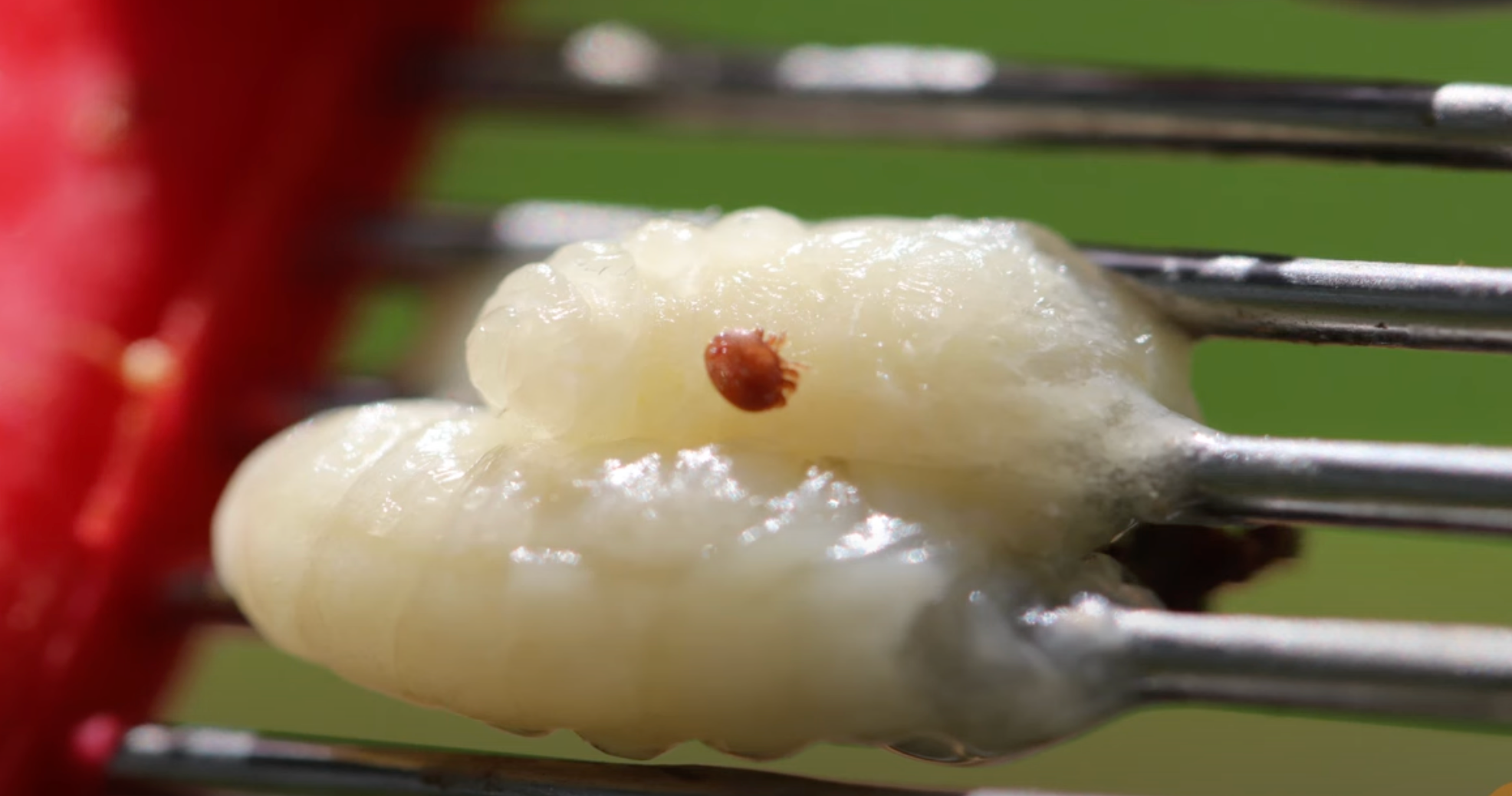Understanding the Varroa Mite Lifecycle in Australia
- Varroa mites enter hives on adult bees and then move to bee larvae.
- Most of the Varroa mite's life cycle happens hidden inside capped brood cells.
- Female Varroa mites prefer drone brood cells for laying eggs, as drones stay capped longer.
- Mites feed on bee pupae, which can cause deformities or affect the health of emerging bees.
- Learning from New Zealand's experience helps Australia prepare for and manage Varroa challenges.
Getting to Know the Varroa Mite Lifecycle
Understanding the Varroa mite's lifecycle is essential for Australian beekeepers. These tiny parasites pose a major threat to bee colonies. By learning about how Varroa mites live and reproduce, you can take better steps to protect your bees.
This article looks at the Varroa mite's biology and lifecycle, drawing insights from New Zealand's experience. Knowing how these mites behave is crucial for keeping your hives healthy in Australia.
How Varroa Mites Get Into the Hive
Varroa mites often enter a bee hive as opportunistic hitchhikers, clinging to adult bees. This usually happens when bees drift between hives or during robbing. Think of it like an unwanted guest sneaking into your home. Once inside, the Varroa mite quickly leaves the adult bee and goes looking for bee larvae.
The Varroa Mite's Hidden Life Cycle
Most of the Varroa mite's life cycle happens out of sight, inside a capped brood cell. Worker bees unknowingly seal these mites inside with a developing larva. Once sealed, the female Varroa feeds on the larva. After feeding, she lays an egg, which typically becomes a male mite first. Then, the female mates and continues to lay more fertilised eggs.
The female Varroa has to lay her eggs quickly and make sure her offspring grow up before the bee emerges from its cell. This short timeframe means quick reproduction is key for the mite.
Why Drone Brood is a Target
Varroa mites are smart about where they lay their eggs. They often pick drone brood cells. Drones stay in their capped cells for a longer time than worker bees. This extra time allows the female Varroa to produce more mature offspring, which helps the mite population grow faster.
How Feeding Harms Bees
While inside the capped cell, Varroa mites feed on the developing bee pupae by taking their body fluids. This feeding can lead to problems for the bee, such as deformities or reduced health once it emerges. A strong mite infestation can greatly weaken a colony. To learn more about how to keep your bees healthy, check out our resources on Hive Health.
What This Means for Australia
Australia can learn a lot from New Zealand's experience with Varroa mites. Knowing how Varroa mites behave helps us get ready for and reduce the problems this pest might cause here. Taking action early, based on what other regions have learned, is very important for keeping Australian bee colonies strong and healthy.
Your Step-by-Step Guide to Understanding and Managing Varroa
Knowing the Varroa mite lifecycle helps you manage them better. Here is a systematic approach:
Step 1: Learn the Lifecycle Details
Familiarise yourself with how Varroa mites enter hives, their hidden life in brood cells, and how they reproduce. Understand why drone brood is a preferred target. This basic knowledge forms the foundation for effective management.
Step 2: Start Monitoring Regularly
Consistently check your bee colonies for mites. Use simple and effective ways like sugar shakes or sticky boards to check mite levels. Early detection is key to preventing major infestations. For detection tools, explore our health and treatment products.
Step 3: Understand Mite Impact
Learn about the signs of mite damage, such as deformed bees or weakened colonies. This helps you understand the urgency of treatment if mite levels are high.
Step 4: Develop a Management Plan
Based on your monitoring results and the mite lifecycle knowledge, create a plan. This might include using approved treatments at specific times when they will be most effective, or trying cultural practices like drone brood removal. For available solutions, explore Ecrotek's Varroa Mite Treatments.
Step 5: Embrace Continuous Learning and Adaptation
The beekeeping world is always changing. Keep learning about new research and ways to manage Varroa. Be ready to change your plan based on what you learn and what works best for your specific hive and local conditions. Preventing diseases and pests is generally more effective than treating established infestations. Learn more about Protecting Your Bees from Diseases and Pests.
Summary of Key Takeaways
- Varroa mites enter hives on adult bees and spend most of their lives hidden inside capped brood cells.
- They actively feed on bee pupae, which can cause health issues for emerging bees.
- Drone brood is a favored place for egg-laying because of its longer development time.
- Regular monitoring and understanding the mite's lifecycle are essential for effective Varroa management.
- Learning from New Zealand's experience helps Australian beekeepers prepare and implement proactive control measures.
Ready to Protect Your Hives?

Ecrotek Australia provides the essential tools and knowledge for effective Varroa mite management. From precision detection kits to complete treatment options, we are dedicated to helping you maintain healthy and productive colonies.
Shop Varroa Mite ProductsAlternatively, contact our team today for personalized advice on Varroa mite management solutions tailored to your beekeeping operation.


